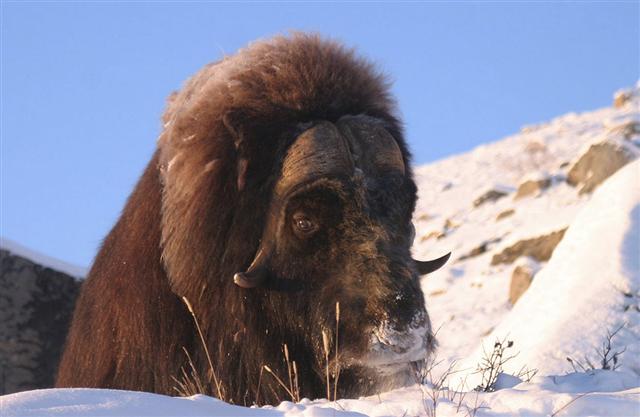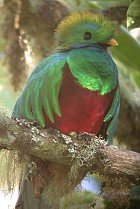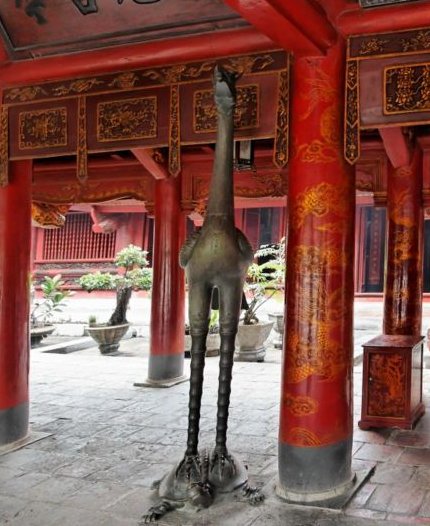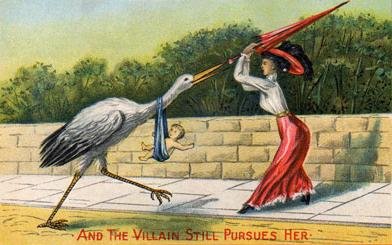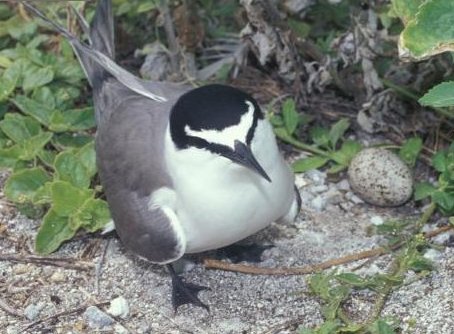|
584
37 In the Beginning of the world there was only Water, and then Raven flew up and drove his Beak into the Fabric of the sky: ... In the morning of the world, there was nothing but water. The Loon was calling, and the old man who at that time bore the Raven's name, Nangkilstlas, asked her why. 'The gods are homeless', the Loon replied. 'I'll see to it', said the old man, without moving from the fire in his house on the floor of the sea. Then as the old man continued to lie by his fire, the Raven flew over the sea. The clouds broke. He flew upward, drove his beak into the sky and scrambled over the rim to the upper world. There he discovered a town, and in one of the houses a woman had just given birth ... ... Note that rain and stars are singled out as the characteristics of the sky: we have seen that the ancients of Mesopotamia and in India shared the concept of a divine 'sky garment' consisting either of rain clouds or of the starry sky ...
I recalled this account of young Raven when contemplating the words of Metoro - i ako te vai. Ako. To sing, to recite: he-ako i te kaikai, to recite the [text accompanying a] string figure kaikai; he-ako i te rîu, to sing rîu. Vanaga. Song. Ako hakaha'uru poki = 'song to make children sleep'. Barthel. Ákoáko, to recite hymns in honour of a deity. Vanaga. For he may have meant 'the singing sound of sweet waters'.
... The life-force of the earth is water. God moulded the earth with water. Blood too he made out of water. Even in a stone there is this force, for there is moisture in everything. But if Nummo is water, it also produces copper. When the sky is overcast, the sun's rays may be seen materializing on the misty horizon. These rays, excreted by the spirits, are of copper and are light. They are water too, because they uphold the earth's moisture as it rises. The Pair excrete light, because they are also light' ... 'The sun's rays,' he went on, 'are fire and the Nummo's excrement. It is the rays which give the sun its strength. It is the Nummo who gives life to this star, for the sun is in some sort a star.' It was difficult to get him to explain what he meant by this obscure statement. The Nazarene made more than one fruitless effort to understand this part of the cosmogony; he could not discover any chink or crack through which to apprehend its meaning. He was moreover confronted with identifications which no European, that is, no average rational European, could admit. He felt himself humiliated, though not disagreeably so, at finding that his informant regarded fire and water as complementary, and not as opposites. The rays of light and heat draw the water up, and also cause it to descend again in the form of rain. That is all to the good. The movement created by this coming and going is a good thing. By means of the rays the Nummo draws out, and gives back the life-force. This movement indeed makes life ... Which ultimately could have referred to the happy (lucky, very good, thumbs up) days of quickly running cool spring waters stemming from melting winter snows high up:
Which would cause the announcing (calling out, ragi) that the fields of summer were lying ahead - it would be the first of the multiple voices of spring. ... The three of them had their copal, and this is what they burned as they incensed the direction of the rising sun. They were crying sweetly as they shook their burning copal, the precious copal. After that they cried because they had yet to see and yet to witness the birth of the sun. And then, when the sun came up, the animals, small and great, were happy. They all came up from the rivers and canyons; they waited on all the mountain peaks. Together they looked toward the place where the sun came out. So then the puma and jaguar cried out, but the first to cry out was a bird, the parrot by name ... ... The earth rises up from the sea again, and is green and beautiful and things grow without sowing. Vidar and Vali are alive, for neither the sea nor the flames of Surt have hurt them and they dwell on the Eddyfield, where once stood Asgard. There come also the sons of Thor, Modi and Magni, and bring along his hammer. There come also Balder and Hoder from the other world. All sit down and converse together. They rehearse their runes and talk of events of old days. Then they find in the grass the golden tablets that the Aesir once played with. Two children of men will also be found safe from the great flames of Surt. Their names, Lif and Lifthrasir, and they feed on the morning dew and from this human pair will come a great population which will fill the earth. And strange to say, the sun, before being devoured by Fenrir, will have borne a daughter, no less beautiful and going the same ways as her mother ... ... I must here take the opportunity to document, before it vanishes from my memory, how scientists (according to a TV program I happened to stumble on yesterday) had found out that the 91 vertical stone segments clearly had been arranged in order to produce a remarkable acoustical phenomenon - viz. how someone (like a priest) when clapping his hands standing on the ground in front of the pyramid would receive an echo of approval from the stones, sounding exactly like the chirp of the Flying Serpent (Kukulkan, the Quetzal Coatl) ...
I.e. it would be what followed after the culmination of Fomalhaut.
And it was the task of the astronomer (the 'crane') to pinpoint the exact location for this great event, which was much appreciated by everyonel. ... Horapollo, the grammarian of Alexandria, about A.D. 400, tells us that the crane was the symbol of a star-observer in Egypt ...
On Easter Island the corresponding bird with a sharply pointed beak, announcing spring, was Manu Tara:- The Sea Swallow: Tara. 1. Thorn: tara miro. 2. Spur: tara moa. 3. Corner; te tara o te hare, corner of house; tara o te ahu, corner of ahu. Vanaga. (1. Dollar; moni tara, id.) 2. Thorn, spike, horn; taratara, prickly, rough, full of rocks. P Pau.: taratara, a ray, a beam; tare, a spine, a thorn. Mgv.: tara, spine, thorn, horn, crest, fishbone. Mq.: taá, spine, needle, thorn, sharp point, dart, harpoon; taa, the corner of a house, angle. Ta.: tara, spine, horn, spur, the corner of a house, angle. Sa.: tala, the round end of a house. Ma.: tara, the side wall of a house. 3. To announce, to proclaim, to promulgate, to call, to slander; tatara, to make a genealogy. P Pau.: fakatara, to enjoin. Mq.: taá, to cry, to call. 4. Mgv.: tara, a species of banana. Mq.: taa, a plant, a bird. Ma.: tara, a bird. 5. Ta.: tara, enchantment. Ma.: tara, an incantation. 6. Ta.: tara, to untie. Sa.: tala, id. Ha.: kala, id. Churchill. Tarai. 1. Deluge, sound of water; ua tarai, a smart shower. 2. To carve, to square, to rough-hew, to shape; taraia, rough-hewn. P Pau.: tarai, to cut, to hew, to carve. Mgv.: tarai, to rough-hew, to carve. Mq.: taái, to cut, to rough-hew, to work wood or stone. Ta.: tarai, to cut, to fashion. Churchill. Sa.: talai, to adze. To.: talai, to smooth off rough edges. Fu.: talai, to cut off knots or thorns ... Churchill 2. ... On Easter Island it was the sooty tern, the sea swallow, manu tara, who arrived on wings with spring - like the bird sent out by Noah ...
|
||||||||||||||||||||||||||||||||||||||||





